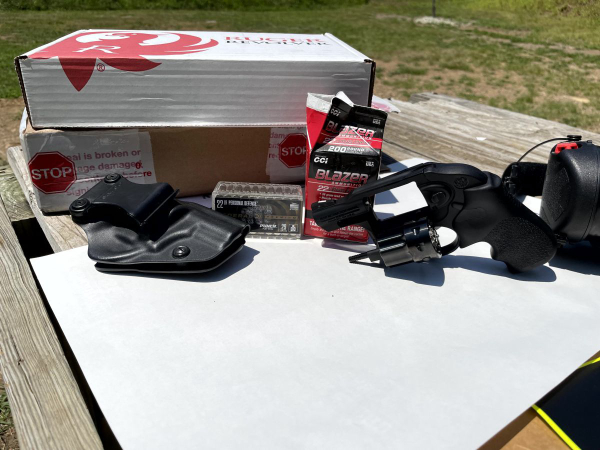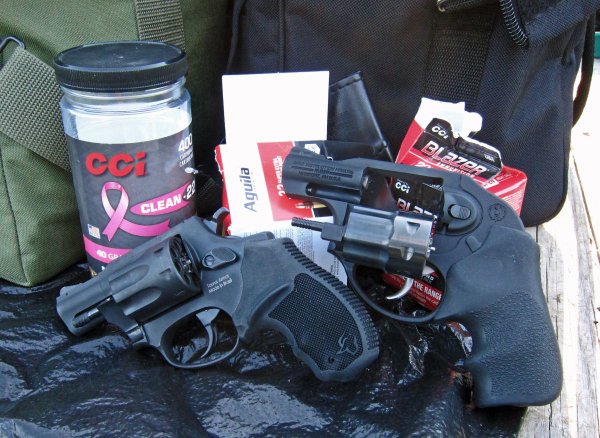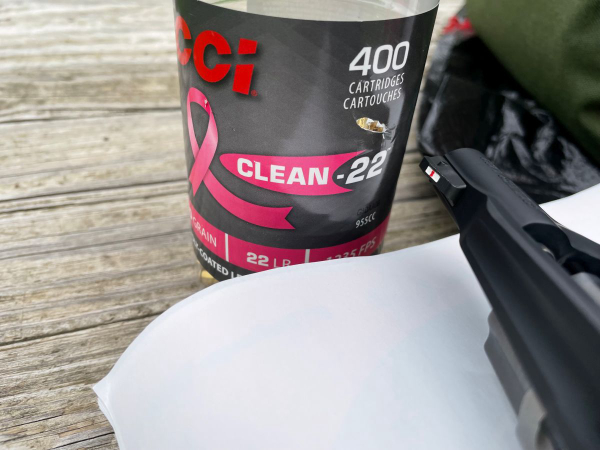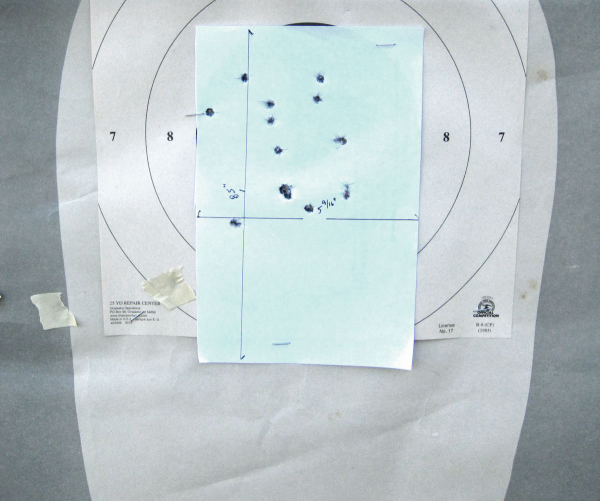Some years ago, I got a Taurus M942 snub 22 revolver for testing. Sadly, the gun failed to stabilize any 22 LR rounds I shot through it … at any distance. I felt badly about it, returned it and asked for a replacement.
That didn’t happen.
Since, I’ve worked with other 22 rimfire understudies of the revolver and semi-auto styles. I continued to ask for another shot with the 942 – I thought the format had merit.
Lately, I watched a bit of discussion between members of the brotherhood, this time on a Primary & Secondary “modcast.” The topic was “Optimal Is Not Universal” and the discussion can be heard here.
Among the industry “luminaries” (there I go again), there was brother Bolke, Legendary Lawman Marshal Chuck Haggard and our own Tactical Professor Claude Werner (“It’s only an arm’s length gun if you’re incompetent.”)
Aside from acres of relevant wisdom, including gems such as a discussion of the importance of How to Win Friends and Influence People -- the “should-be” standard textbook for anyone who carries a gun, was a discussion of the 22 revolver and its import in the world of defense handgun application and training.


Nearly coincidental with that modcast being replayed on YouTube, I was notified of an incoming T&E gun, the Ruger LCR – this one in 22 LR.
It’s a gun that’s very appropriate for the topic area, a decent “old man gun,” and a candidate for rimfire trainer duty.
I’d asked about a replacement Taurus M942 again just a few months before and one arrived at about the same time as the Ruger. It was time for a head-to-head comparison before exploring them individually in some detail.
First, the current sample of the 942 is a matte black 2” revolver – the previous gun was the same short snub format, but constructed of stainless. An 8-round 22 LR (also available in 22 Magnum, as well as other barrel lengths), this DA-SA 22 has a 2-inch barrel, a rear sight blade fitted into a slot milled in the frame as well as a black serrated ramp up front.
The rubber-ish stocks look strange to me, angled for a low hold relative to the barrel. Remarkably, they “held better than they looked,” a handy coincidence.

All steel, the little gun weighs over 23 ½ ounces – it’s a chunk. The frame, barrel (shroud and liner) as well as the cylinder are all steel, contributing to the weight. The Taurus website shows an “Ultralite” version of the M942 with an aluminum frame (with steel barrel and cylinder) weighing in at just under 18 ounces – still weighty enough to make shooting easy, I’d imagine.
The Ruger LCR is the “plastic” small revolver; it has a polymer subframe under the main receiver which (in 22LR and 38 Spec.) is constructed of aluminum. This causes the 8-shot Ruger 22 to weigh in at about 63% of the weight of the M942 sample. It lacks the rear sight blade, having a trough in the frame for a rear sight. This causes problems of its own, which we’ll discuss soon.
The 1.87” barreled Ruger is stocked with the Hogue Tamer Monogrip – though it doesn’t need taming, it’s consistent with the 38, 357 Magnum and 327 Magnum versions of the LCR – as well as the 22 Magnum.
The Taurus MSRP is priced at just under 60 percent of the suggested retail of the Ruger LCR. The differences in finish treatment are apparent. The action – double action only for the Ruger and predominantly (for me) double action of the Taurus – is smooth and not terribly heavy for either gun. Some shooters may find them to be stout, but I’ve been shooting DA revolvers since the 1970s.
As rimfire chambered DA revolvers go, these aren’t bad at all.
The LCR 22 had arrived first and I shot it before the Taurus arrived. Sadly, the new gun shoots 3” low at 20 feet with Blazer 38 grain bulk ammo. It shot even lower with Norma TAC-22 (which is the only round to offer sticky ejection from this gun so far) and even lower, 4” – with Winchester SuperX – at the same distance.
I shot the LCR 22 with CCI CLEAN-22, on Caldwell “Orange Peel” 7” Oval Target. Firing four-shot strings, I was using the Tactical Professor’s ‘ball and dummy’ exercise (shoot one, follow through, open cylinder and spin, close gun onto cylinder and try again.) Eight rounds appeared on the target, all in the lower ½ with only one touching the center horizontal line.

I had held center/center (sights aligned front in center of the rear notch, equal light on both sides of the front sight, equal height with front sight in line with top of rear notch. Later, using a red “Sharpie” marker, I put a horizontal red line across the face of the white insert in the front sight. I’d use it as the “top” of the front sight for “precision.” Lining the line up with the top of the rear notch, ½ of the front ramp was above the rear notch. I held with that line as center as possible on the seven-inch oval. The four rounds hit just under five inches low.
I finished with Blazer 38 grain bulk ammo on a five-yard “one-hole” drill. I ‘redlined’ the sights and got four into a single hole about center.
On the following trip, I took the LCR 22 with the Taurus 942. I was obviously concerned that the new 942 could have the same “bullet tipping” action as the one from a few years ago. Shooting Aguila 38 gr. copper plated “Super Extra” hollow-point at 5 yards, I had a nearly-one hole group fired DA, with no signs of ‘tipping.’ I moved back to seven yards, shot CCI Blazer 38 grain round-nose; the group was more scattered but still “minute of plinking.” Following up with CCI CLEAN-22 at seven yards and more Aguila, I found that, so far, the gun likes Aguila the best.
I shot the little gun at 25 yards on a B27 center (analog) finding that black sights against a black target wasn’t a winner. I’d align sights on the cardboard off the repair center then carefully move the aligned gun onto the B27. All rounds hit just under the center, with one low left (that was me).
Posting two half-sheets of copy paper stacked vertically, each 8 ½” high by 5 ½” wide, I had a target for each gun. I shot the top one with the Taurus M942 with four-shot groups from 25 yards first, then fifteen yards. The 25-yard effort was single action – the first SA group of the day – and the closer one double action. The difference? Nearly nothing was gained shooting SA.

The 25-yard group was just short of four inches, the 15-yard group was 3 3/8” – four inches with a shooter-induced and called flyer.
The bottom target was shot with the Ruger LCR22 with the same ammo. At 25 yards, I held center/center at the top of the bottom sheet – that is, the front sight held level with the top of the rear sight. The group, which centered about 9-inches low, was 4 ½”. I shot the 15-yard group with a “redline” hold (1/2 of the front sight high out of the notch) holding for the top of the page. The group hit the target sheet, the group crowding into 4 ¼”, with the best three shooting into 2 ½”.
With the pair of rimfire snubs, I elected to do a “16-shot rimfire revolver” drill. Using my scrap-paper targets (1/2 sheet of copy paper) over a used FBI-Q target, I started at ten feet. The first stage is a pair of singles to the head from the holster, starting with hand on gun in the holster. This is followed by three pairs from guard into the scrap-paper. Moving back to ten yards, it’s a pair from the holster, followed by a transition of the gun to the other hand to fire another pair – all rounds are fired with two hands on the gun. (I might look at a strong-hand-only/weak-hand-only stage later).
It finishes at fifteen yards with a riff on the old Arizona Daytime Qual Course. It starts with a pair from the holster. That’s followed by two singles from guard.
The M942 fired with CCI Blazer ammo showed all hits into the preferred scoring areas. The LCR22 started fine with all hits well inside. At the ten-yard stage, I held high in deference to the gun’s tendency to shoot tragically low – and shot “out of the notch.”
Bad move. The hits soared high.
At fifteen yards, I recovered. All hits were on the sheet.
Having to futz around with the visual solution makes the LCR22 a bit dicey – without more practice, and practice is the reason to even have the LCR22. I’d like to see the factory – or even an aftermarket provider – notch the receiver for a sight blade higher than the “trough” in a manner like the Taurus Model 942. That’s definitely the reason the 942 is easier to shoot.
To nag Taurus, they could have colored the front sight – but so can I, so I won’t complain too loudly.
These are princely handguns and I will be shooting them more. Stay tuned.
-- Rich Grassi